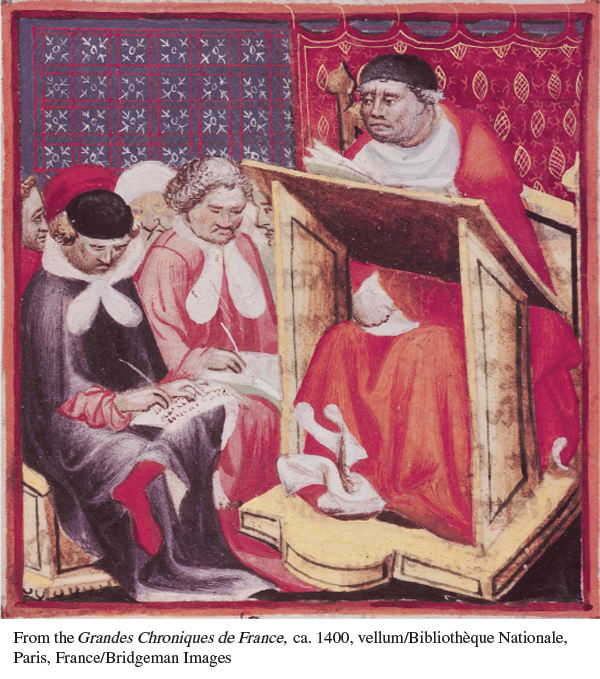A History of Western Society: Printed Page 312
The Past Living Now
University Life
F airs and banquets with medieval or Renaissance themes offer us the opportunity to watch jousts and jugglers, eat meat pies, listen to singers with lutes, buy stained-
Professors established the curriculum and set the requirements for courses and the length of time for study. That curriculum typically consisted of a core of ancient texts — such as the Bible, Justinian’s Code, and the works of Aristotle — that all students had to master. The standard method of teaching was a lecture in which a professor talked about a topic — often a passage from one of those key texts — while standing in front of a class of students taking notes. Professors explained and interpreted the passage; this interpretation was called a gloss. Texts and glosses were sometimes collected and reproduced as textbooks. Because books had to be copied by hand, they were extremely expensive, and few students could afford them. Students therefore depended on their own or friends’ notes. Lecture courses were augmented by seminars in which students debated key issues in what they were studying. Professors determined the form and content of examinations, which were oral and, students lamented, very difficult. Students all wanted to know exactly what would be on each examination.
Students lived in rented rooms or, by the late thirteenth century, in residential colleges, both of which could be costly. The money sent by parents or patrons was often not sufficient for all expenses, so students augmented it by doing odd jobs. If a candidate passed all exams, he was awarded a license to teach, the earliest form of academic degree. Initially these licenses granted the title of master or doctor, both derived from Latin words meaning “teach.” The lower bachelor’s degree was developed later. All degrees came to be certified by pieces of parchment with elegant seals and Latin phrases. The difference in status among the degrees was reflected in differences in the garments scholars wore and can be seen in the robes worn at graduations today. Robes of those with a doctorate often have velvet bands, more ornate than master’s or bachelor’s robes; master’s robes, in turn, include hoods, making them fancier than the simple bachelor’s robe. So look around at the next graduation you attend — which could be your own! — and you will be surrounded by more things with their origins in the Middle Ages than at any medieval fair.

QUESTIONS FOR ANALYSIS
- In what ways were medieval universities similar to those of today? In what ways were they different?
- Why do you think universities have retained so many features over the centuries?